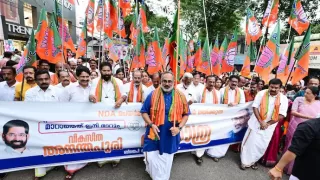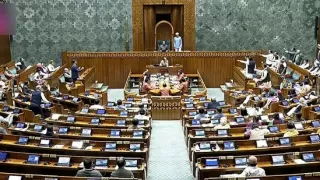The recent announcement by the Department of Homeland Security (DHS) signals a sweeping change in employment authorisation rules for non-citizens in the United States. Thousands of Indian professionals—including those working under dependent and spousal permits—now face the prospect of losing their legal ability to work if their renewal applications for the Employment Authorization Document (EAD) are not approved on time. While many in the Indian diaspora have built long-term careers in the U.S., these changes now introduce sharp new risks.
Under the revised rule, which takes effect from October 30, 2025, the automatic extension period that formerly allowed continued work during renewal processing will be eliminated for most categories. In effect, if an applicant’s current EAD expires and their renewal has not been approved, they must stop working immediately. The burden will fall not only on highly skilled visa holders but also on spouses, interns, students, and others whose permission to work depended on streamlined renewals.
The ripple effects are likely to be considerable. Indian nationals—who represent a large share of the U.S. workforce in tech, healthcare, and research—are already subject to some of the longest immigration-processing times. With the removal of the safety-net extension, many now face potential job disruption, income loss, and status uncertainty at a time when global competition for talent is intensifying.
Why Indian Nationals Are Especially Affected
India’s citizens form one of the largest cohorts of employment-authorized non-citizens in the U.S., working in sectors such as information technology, engineering, healthcare, and academia. Because many of them rely on dependent work permits (for example, spouses of H-1B visa holders) or are awaiting green card processing, changes to EAD renewal rules hit this group disproportionately. Advocacy groups warn that even a single day of lapse in work authorisation can trigger a cascade of complications for families.
Furthermore, Indian nationals routinely face long backlogs in the green card queue due to per-country limits. This means many remain in interim status for years—and any disruptions to their interim work permission can compound the stress and financial uncertainty they already face. For many, the new rule does not just threaten employment—it threatens the entire basis on which they live and work in the U.S.
What the New Rule Changes
Under the previous system, applicants who filed timely renewals of their EAD were granted automatic extensions—sometimes up to 540 days—to continue working while their application was adjudicated. However, effective for renewal applications filed on or after October 30, 2025, that automatic extension is eliminated for most eligible categories. Applicants whose current EAD expires and whose renewal hasn’t been approved must stop working immediately.
DHS justifies the rule change in terms of national security and enhanced vetting. The agency stated that aliens who file to renew their EAD on or after October 30, 2025, will no longer receive an automatic extension. There are limited exceptions—such as individuals whose renewal application was filed before the cutoff date, or those whose authorisation is automatically extended by law or federal register notice, like certain TPS holders.
Risks, Timeline and What Affected Individuals Must Do
The elimination of the safety-net extension leaves many workers vulnerable to immediate job loss. Legal experts warn that this could trigger forced unemployment among categories like H-4 spouses, Adjustment-of-Status applicants, and STEM-OPT students. The most common categories where Indian nationals will see impact include students on OPT, H-4 spouses, and green card applicants.
To reduce risk, the government recommends filing renewal applications up to 180 days before current EAD expiration. But the reality of processing delays means that even early filers may face a gap if adjudication takes longer than expected. Employers must also now track authorisation expiration more closely. A lapse in valid work authorisation could raise I-9 and employment-verification compliance issues.
Broader Implications for Workforce and Industry
Many U.S. employers depend on Indian-origin professionals in high-tech, research, and healthcare roles. Disruption of work authorisation could result in labor shortages, project delays, and elevated costs of rehiring or transferring talent. Some analysts worry the timing may dissuade non-citizen professionals from accepting U.S. roles or prompt earlier relocation decisions.
Beyond the economic impact, the policy shift sends a signal about how non-citizen work authorisation is being recalibrated. When millions of dollars of investment in education, training, and career development hinge on legal permit continuity, even a temporary pause can have ripple effects across families, communities, and companies in the Indian diaspora.
The Outlook: Uncertainty and Waiting
Because the timeline for permit renewal processing remains lengthy—often months or longer—the elimination of automatic extensions introduces a new uncertainty. Indian nationals already facing green card wait times of years now must contend with potential employment gaps even if they’re in full compliance. Some advocates have described the rule as a major shift in how employment authorisations are handled.
With so many variables in flux—policy interpretation, adjudication backlogs, employer readiness, and personal risk factors—the only certainty is that thousands of skilled Indian workers and their families must now navigate significantly higher stakes when it comes to maintaining legal employment in the U.S.
Also Read: Trump-Xi Summit Yields Tariff Cuts and Soybean Trade Deals


























